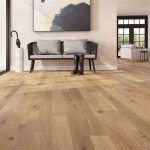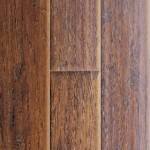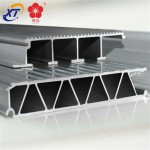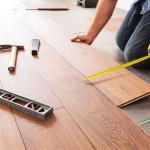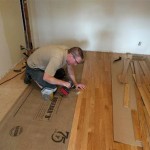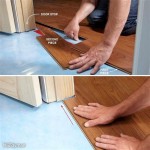White Oak Hardwood Flooring: A Comprehensive Guide
White oak hardwood flooring stands as a popular choice for residential and commercial spaces due to its durability, versatility, and aesthetic appeal. Its neutral color palette and distinctive grain patterns make it adaptable to a wide range of interior design styles. This article provides a comprehensive overview of white oak hardwood flooring, covering its properties, grades, installation, maintenance, and comparisons to other hardwood options.
White oak ( *Quercus alba* ) is a species of oak native to eastern and central North America. It’s a hardwood known for its density, strength, and resistance to decay and water penetration. These properties make it a suitable material for flooring, furniture, and construction applications. The wood is characterized by a light, creamy brown color with subtle variations and a relatively straight grain pattern, although variations like quarter-sawn and rift-sawn cuts can result in more intricate designs.
Key Properties of White Oak Hardwood
Several key properties contribute to white oak's suitability for flooring. These characteristics impact its performance, longevity, and overall value.
Durability and Hardness: White oak boasts a high Janka hardness rating, typically around 1360. The Janka hardness test measures the force required to embed a steel ball into the wood, indicating its resistance to dents and scratches. This rating positions white oak as a durable flooring option capable of withstanding heavy foot traffic in residential and commercial environments. The higher the Janka rating, the more resistant the wood is to wear and tear.
Water Resistance: Unlike red oak, which is more porous, white oak possesses closed cellular structures that provide greater resistance to water penetration and decay. This characteristic makes it a preferred choice for areas prone to moisture, such as kitchens, bathrooms (with proper precautions), and entryways. While not waterproof, its inherent water resistance offers a greater degree of protection compared to other hardwood species. Sealants and finishes further enhance its protection against moisture.
Dimensional Stability: White oak exhibits good dimensional stability, meaning it expands and contracts less than some other wood species in response to changes in humidity. This stability minimizes the risk of warping, cupping, and gapping in flooring installations. However, it's still crucial to maintain a stable indoor environment to prevent excessive movement in the wood. Proper acclimation before and during installation is paramount.
Workability: White oak is relatively easy to work with, accepting nails, screws, and glue well. It also sands and finishes smoothly, allowing for a variety of staining and finishing options. Its workability simplifies the installation process and enables customization to achieve desired aesthetic results. Its ability to be stained also makes it easier to match to existing décor or to create a desired color palette.
Grading and Types of White Oak Flooring
White oak flooring is typically graded based on appearance characteristics, including the presence of knots, mineral streaks, and color variations. These grades impact the overall aesthetic and cost of the flooring.
Select Grade: Select grade represents the highest quality of white oak flooring, characterized by minimal knots, uniform color, and straight grain patterns. It offers a clean and sophisticated look, making it ideal for formal settings. Select grade flooring typically commands a higher price due to its premium appearance and limited availability.
#1 Common Grade: #1 Common grade contains more character marks than select grade, including more frequent knots, mineral streaks, and color variations. It provides a more rustic and natural look, appealing to those seeking a less formal aesthetic. It typically offers a balance between cost and quality, making it a popular choice for many homeowners.
#2 Common Grade: #2 Common grade (also known as Rustic Grade) exhibits the most character marks, including large knots, significant color variations, and potentially some imperfections. It offers a very rustic and informal look, often used in spaces where a natural and aged appearance is desired. It represents the most economical option, although more intensive sorting and installation may be required.
Solid vs. Engineered: White oak flooring is available in both solid and engineered forms. Solid hardwood flooring consists of planks made from a single piece of white oak, providing a traditional and durable flooring option. Engineered hardwood flooring, on the other hand, comprises a thin veneer of white oak bonded to a multi-layered core of plywood or other composite materials. Engineered flooring offers greater stability and moisture resistance than solid hardwood, making it suitable for basements and other areas with fluctuating humidity levels. The choice between solid and engineered depends on factors such as subfloor type, moisture conditions, and budget.
Cut: The way the log is cut into boards influences the grain appearance. Plain sawn is the most common and affordable, showcasing cathedral patterns. Quarter sawn results in a straighter grain and improved stability. Rift sawn produces an even more linear grain pattern and is the most dimensionally stable, but also the most expensive.
Installation and Maintenance of White Oak Flooring
Proper installation and ongoing maintenance are essential for ensuring the longevity and beauty of white oak hardwood flooring. These steps involve careful preparation, correct installation techniques, and consistent cleaning and care.
Acclimation: Before installation, white oak flooring must be acclimated to the environment in which it will be installed. This process involves allowing the flooring to adjust to the temperature and humidity levels of the room for several days or even weeks. Acclimation minimizes the risk of expansion or contraction after installation, preventing warping, cupping, and gapping. The specific acclimation period depends on the type of flooring (solid or engineered), the climate, and the manufacturer's recommendations.
Installation Methods: Solid hardwood flooring can be installed using several methods, including nailing, stapling, or gluing (though gluing is less common). Engineered hardwood flooring can be installed using floating, gluing, or nailing methods. The choice of installation method depends on the type of flooring, the subfloor type, and the installer's preferences. Professional installation is recommended to ensure proper execution and prevent potential problems. Subfloor preparation is critical, ensuring it's level, clean, and dry before any flooring is installed.
Cleaning and Maintenance: Regular cleaning and maintenance are crucial for preserving the appearance and extending the lifespan of white oak flooring. The use of a microfiber mop or broom to remove dirt and debris is recommended. Avoid using excessive water or harsh cleaning chemicals, as they can damage the finish and the wood itself. Specially formulated hardwood floor cleaners are available for more thorough cleaning. Applying a maintenance coat of finish every few years can help protect the flooring from wear and tear and restore its luster. Placing mats at entrances and using felt pads under furniture can also help prevent scratches and dents.
Refinishing: Over time, white oak flooring may require refinishing to remove scratches, dents, and worn finish. Refinishing involves sanding down the existing finish and applying new coats of stain and sealant. Solid hardwood flooring can be refinished multiple times, while engineered hardwood flooring has a limited number of refinishing cycles depending on the thickness of the veneer. Refinishing can restore the flooring to its original beauty and extend its lifespan significantly.
White Oak vs. Other Hardwood Options
When choosing hardwood flooring, it's important to consider how white oak compares to other options, such as red oak, maple, and hickory. Each species possesses unique characteristics that may make it more or less suitable for specific applications.
White Oak vs. Red Oak: Red oak is another popular hardwood flooring option, but it differs from white oak in several key aspects. Red oak has a slightly lower Janka hardness rating (around 1290) and is more porous than white oak, making it less resistant to water damage. Red oak also has a reddish tint, while white oak exhibits a more neutral, creamy brown color. The choice between red oak and white oak often comes down to aesthetic preferences and the intended application. White oak's superior water resistance makes it preferable for areas prone to moisture.
White Oak vs. Maple: Maple is known for its light color and subtle grain patterns. It has a Janka hardness rating that is similar to white oak (around 1450), making it a durable flooring option. However, maple can be more challenging to stain evenly than white oak due to its closed grain structure. Maple also tends to show scratches and dents more readily than white oak, particularly with darker stains. White oak's versatility in accepting stains and its more forgiving nature regarding scratches make it a popular alternative.
White Oak vs. Hickory: Hickory is one of the hardest domestic hardwoods, with a Janka hardness rating of around 1820. Its distinctive grain patterns and color variations give it a rustic and character-rich appearance. However, hickory can be more expensive than white oak and may be more difficult to work with due to its hardness. White oak offers a good balance of durability, workability, and cost-effectiveness, making it a versatile choice for many flooring applications.
Ultimately, the selection of hardwood flooring depends on individual preferences, budget considerations, and the specific requirements of the space. White oak's combination of durability, versatility, and aesthetic appeal makes it a compelling choice for homeowners and business owners seeking a long-lasting and visually pleasing flooring solution.

Bellawood Artisan 5 8 In Vienna White Oak Engineered Hardwood Flooring 7 Wide Ll

Bellawood Artisan 5 8 In Geneva White Oak Engineered Hardwood Flooring 7 Wide Ll

How White Oak Flooring Is Changing Interior Design Carlisle Wide Plank Floors

White Oak Character Grade Unfinished Solid Hardwood Flooring 2 10 Random Lengths Floor Depot

Melmart Woodura Oak Select Wirebrushed Engineered Hardwood Alexanian

White Oak Hardwood Flooring Vermont Wide Plank

1 2 X 5 Talon 100 Yr Prefin Engineered Select White Oak Hardwood Cabinets To Go

Bellawood Artisan 5 8 In Amsterdam White Oak Engineered Hardwood Flooring 7 Wide Ll

White Oak Flooring Hardwood Floors Unfinished

What Are The Pros And Cons Of White Oak Hardwood Floors Artisan Wood Llc
Related Posts

